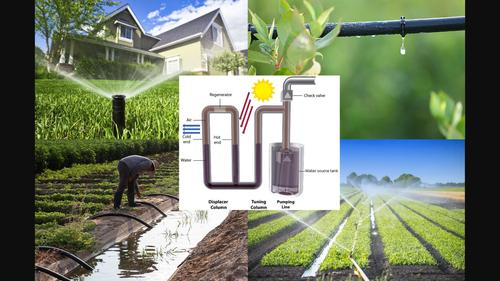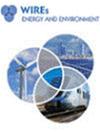使用液体活塞斯特林发动机进行低品位热转换的可行性
IF 5.4
3区 工程技术
Q2 ENERGY & FUELS
引用次数: 0
摘要
液体活塞斯特林发动机(LPSE)是一种低成本、简单、免维护和灵活的外燃机,具有利用低品位热源运行的潜力。本研究回顾了液体活塞式斯特林发动机的主要组件、操作和变体,以及评估其性能的数学模型,这些都是自液体活塞式斯特林发动机诞生以来开发的。因此,从这篇完整的系统性综述中可以推断出 LPSE 在不同应用中的技术可行性,对理论和应用研究人员都特别有用。根据本研究的结果,大多数发动机都有三个主要部件:置换柱、再生器和调节柱。本研究归类的两种主要变体是干式工作流体和湿式工作热流体。由于工作热物理学的复杂性,很难建立分析数学模型,因此对这些发动机的精确分析主要集中在实验和数值技术领域。抽水、冷却和直接发电是这些发动机在文献中的常见应用。然而,这些发动机自 1969 年问世以来,由于能效、功率密度和可靠性较低,尚未实现商业化。本研究的结论是,LPSE 对于使用低品位热量的环保型泵送应用至关重要,尤其是在电网接入有限的偏远地区的灌溉领域。此外,通过取代耗电的现状泵,LPSE 可确保可持续发展,将温室气体排放量降至最低。本文章由计算机程序翻译,如有差异,请以英文原文为准。

Viability of low-grade heat conversion using liquid piston Stirling engines
Liquid piston Stirling engines (LPSEs) are low-cost, simple, maintenance-free, and flexible external combustion engines with the potential to operate from low-grade heat sources. This study reviews the major components, operations, and variants of LPSEs along with the mathematical models to assess their performance, which have been developed since the inception of LPSEs. Consequently, the technical feasibility of LPSEs in different applications is deduced from this complete systematic review, especially useful for both theoretical and applied researchers. The operation is based on a four-stage Stirling cycle with most engines having three main components as per the findings of this study: the displacer columns, the regenerator, and tuning columns. The two main variants categorized by this study are the dry operating fluidyne and the wet operating thermofluidic. The accurate analyses of these engines are mostly within the spheres of experimental and numerical techniques since analytical mathematical models are difficult to develop owing to the complexity of the operating thermo-physics. Pumping, cooling, and the direct generation of electricity are frequent applications of these engines reported in the literature. However, since their inception in 1969, these engines are yet to be commercialized owing to their low energy efficiency, power density, and reliability. The findings of this research conclude that LPSEs are essential for environment-friendly pumping applications using low-grade heat, especially in the irrigation sector of remote regions with limited access to electricity grids. Additionally, by replacing the electricity-consuming status quo pumps, LPSEs ensure sustainability with minimal greenhouse gas emissions.
求助全文
通过发布文献求助,成功后即可免费获取论文全文。
去求助
来源期刊

Wiley Interdisciplinary Reviews-Energy and Environment
ENERGY & FUELS-
CiteScore
11.70
自引率
3.30%
发文量
42
期刊介绍:
Wiley Interdisciplinary Reviews: Energy and Environmentis a new type of review journal covering all aspects of energy technology, security and environmental impact.
Energy is one of the most critical resources for the welfare and prosperity of society. It also causes adverse environmental and societal effects, notably climate change which is the severest global problem in the modern age. Finding satisfactory solutions to the challenges ahead will need a linking of energy technology innovations, security, energy poverty, and environmental and climate impacts. The broad scope of energy issues demands collaboration between different disciplines of science and technology, and strong interaction between engineering, physical and life scientists, economists, sociologists and policy-makers.
 求助内容:
求助内容: 应助结果提醒方式:
应助结果提醒方式:


